
Featured Artist: Mona Marcos

Mona Marcos’ makeshift studio is located on the ground level of her parent’s Daly City home, where one must journey through an overgrown garden filled with a variety of fruit trees and brush to reach the entryway. Holding aside a branch as she crouches beneath another, Marcos tells me her mother loves to let the garden grow wild because it reminds her of her home in the Philippines.
Inside, a large garden-facing window allows for ample natural light to flood the room. White walls are hidden behind piles of various art supplies, houseplants, baskets, notebooks, photographs, paintings, and projects carefully stowed away. A navy blue and white cloth ornately decorated with a floral print hangs several feet opposite the windowed wall, providing some privacy from the remainder of the house. The collection of objects reveals Marcos’ interest in diverse mediums.
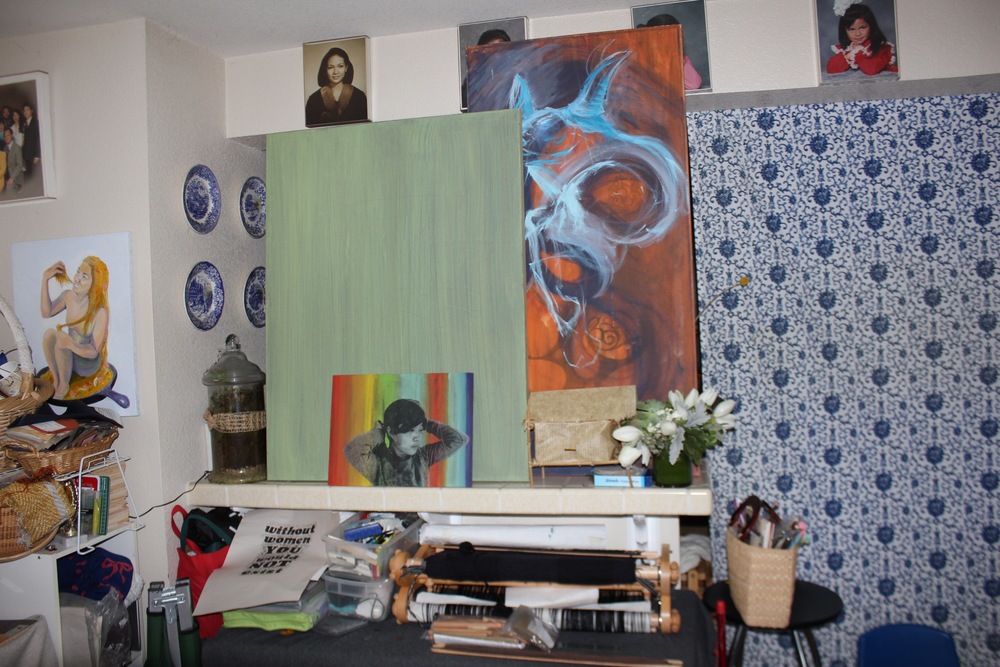
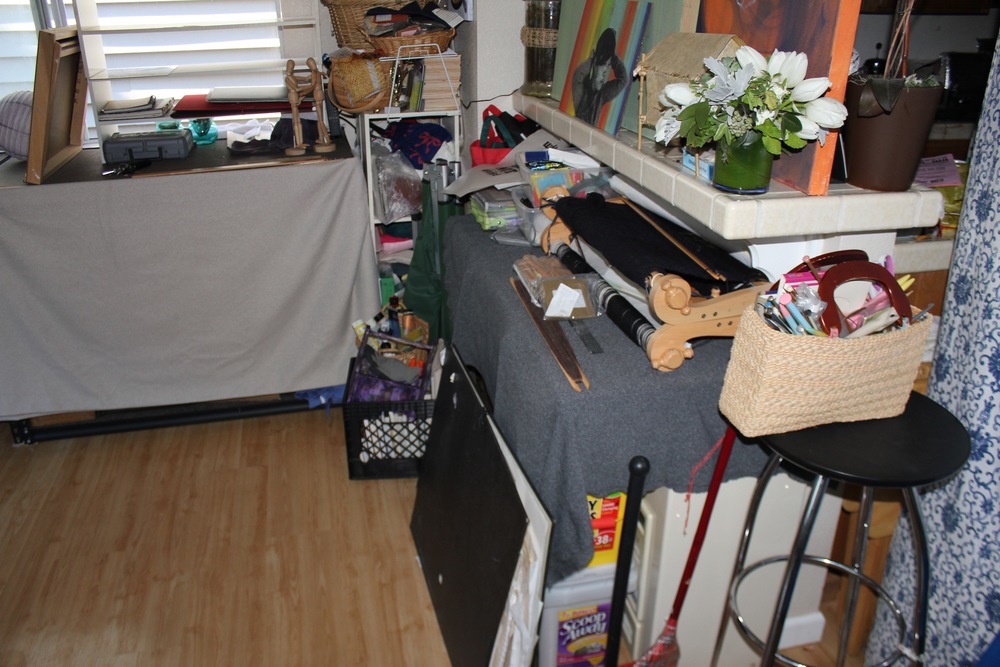
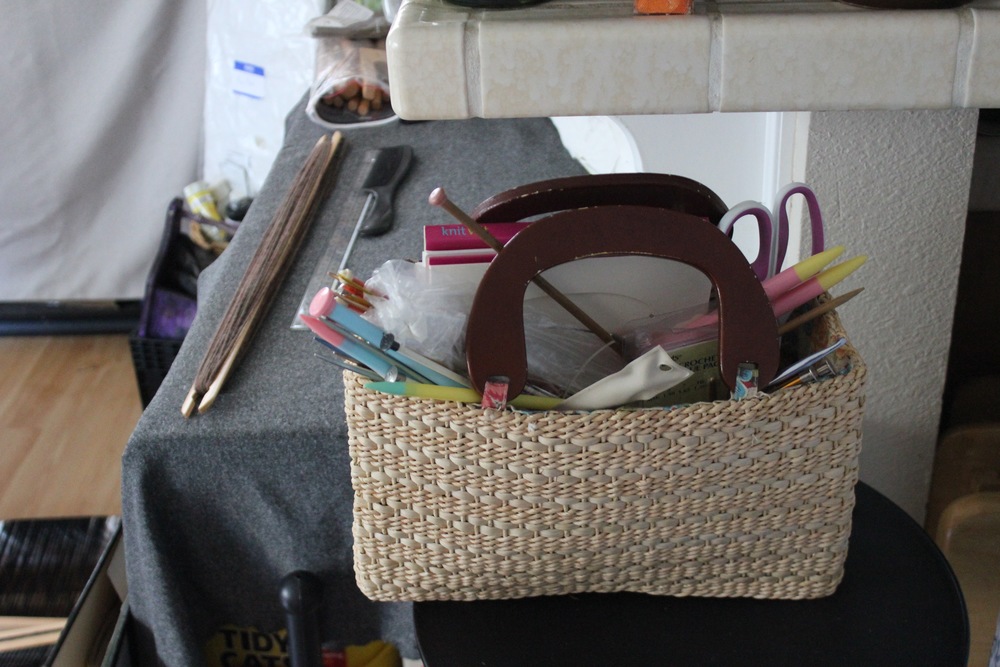
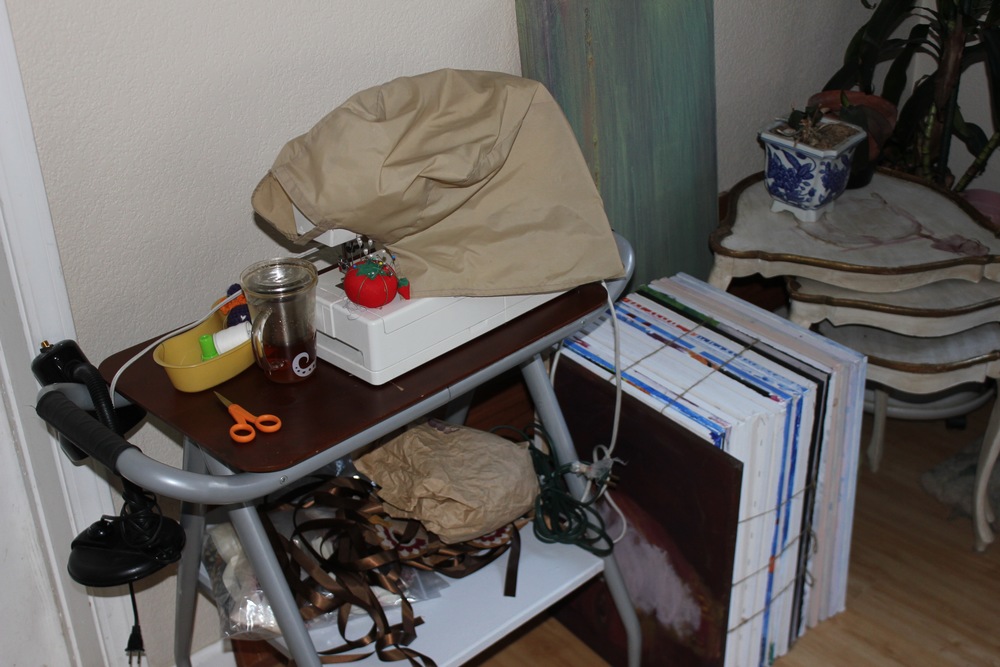
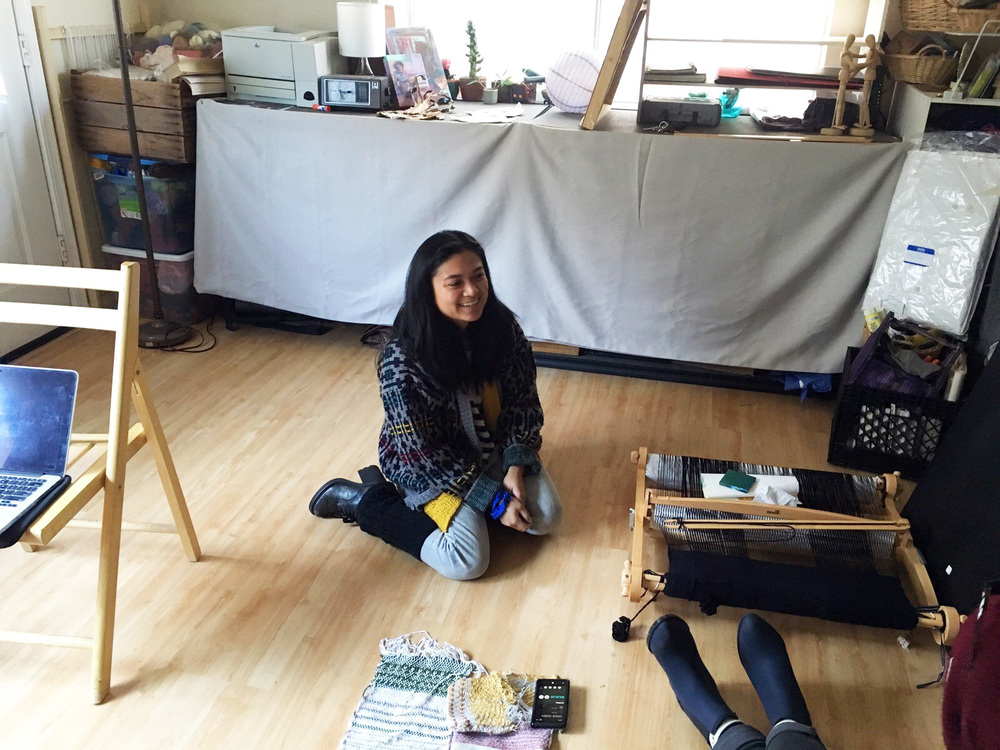
Marcos picked-up weaving after taking an introductory course at San Francisco State University. She recalls walking into her first day of class and immediately falling in love with the rows of jack looms at the back of the room. Soon she was hooked, the weaving process having become meditative for her. Her mother had previously taught her how to crochet and sew, but using the loom, as well as making and dying fabrics were new discoveries she readily embraced.



Although Marcos graduated with a concentration in printmaking, her art has since been more textile driven. Her current body of work focuses on found materials that inspire the direction of her pieces. Marcos’ creations incorporate trash collected from Bay Area streets, and objects repurposed and re-imagined as art. Attracted by the texture and appearance of each item she collects, Marcos later asks herself, “How can I connect these materials together?”
“How can I connect these materials together?”
Marcos attributes this resourcefulness to her mother who is always trying to save and reuse items around the house. Both of Marcos’ parents immigrated to the U.S. from the Philippines in the 80s and raised their children with the tall tales and folklore of their native homeland. Characters from these narratives appear throughout Marcos’ interdisciplinary work, as celebrations of her culture and heritage.
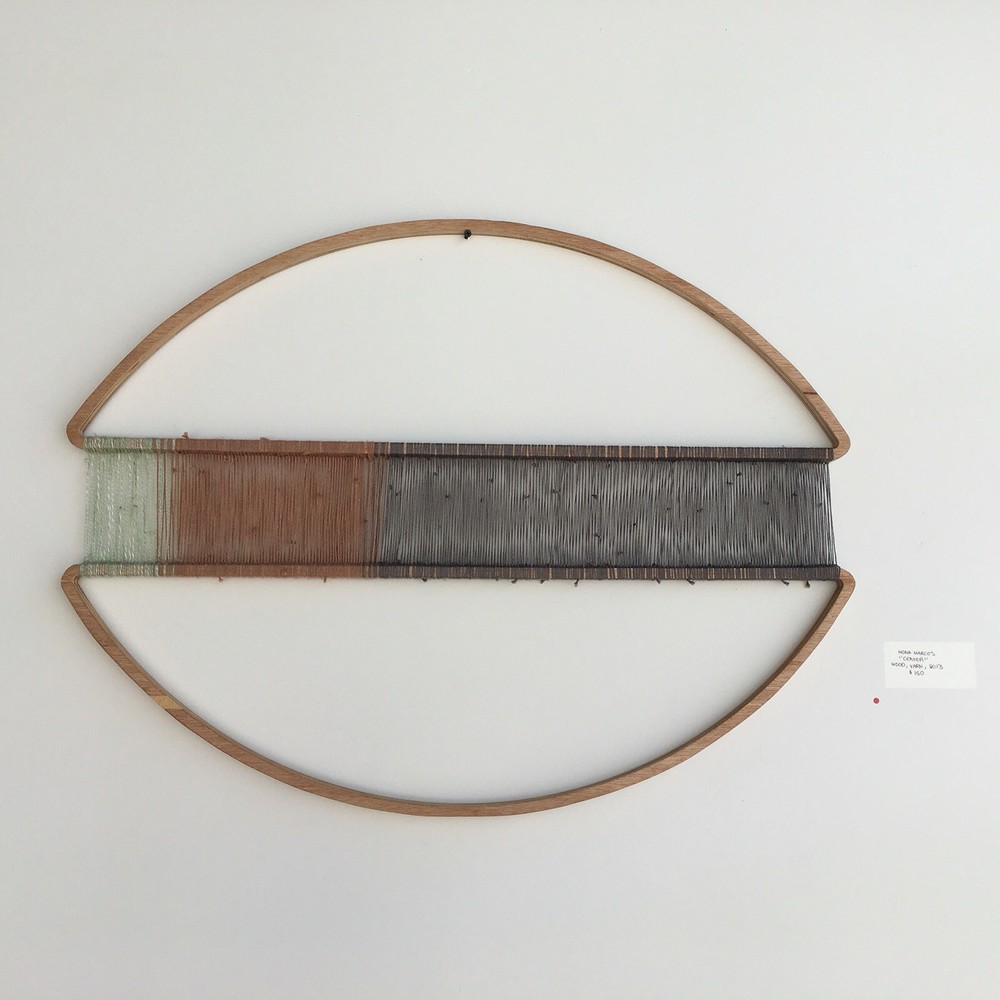
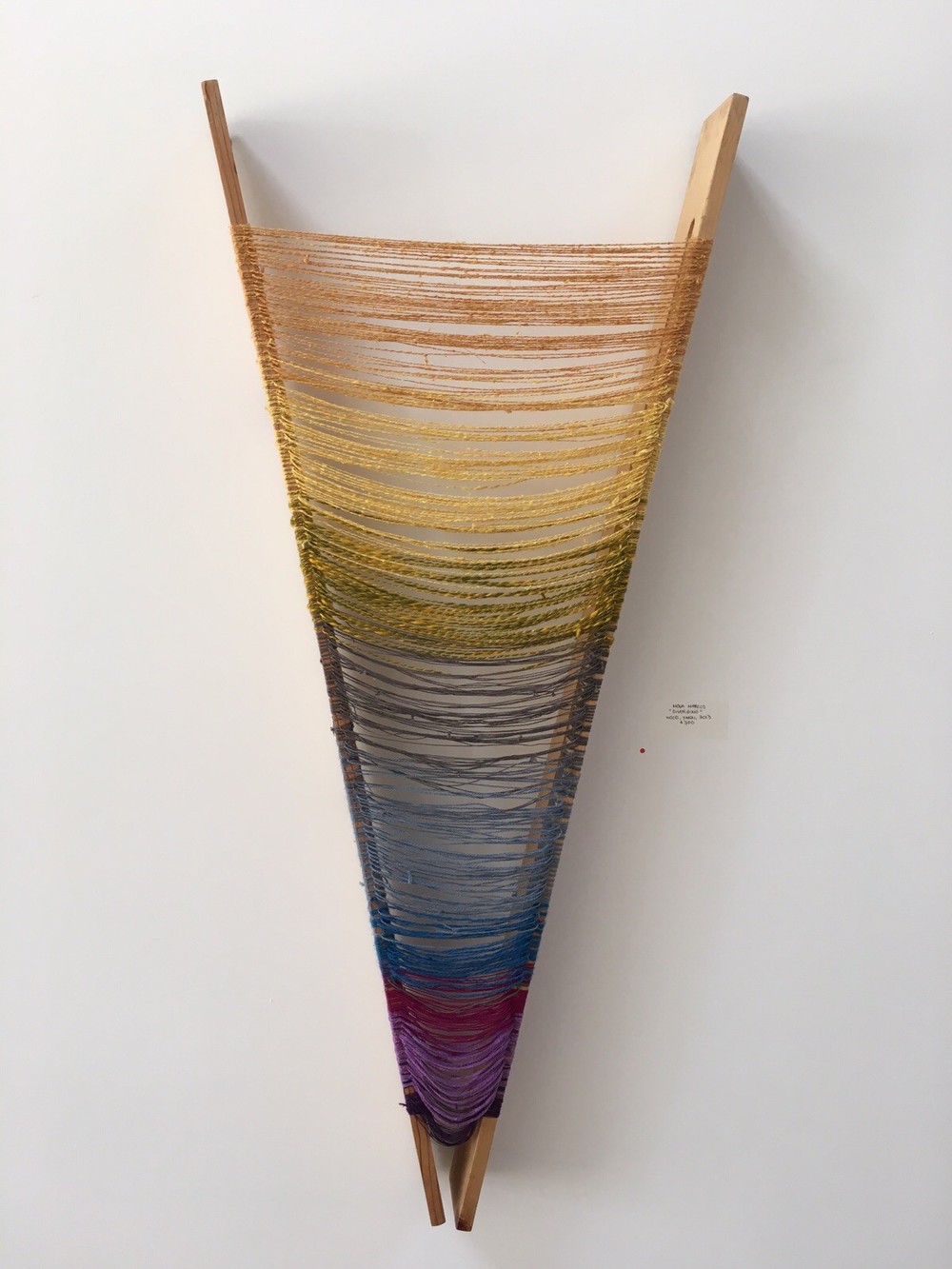
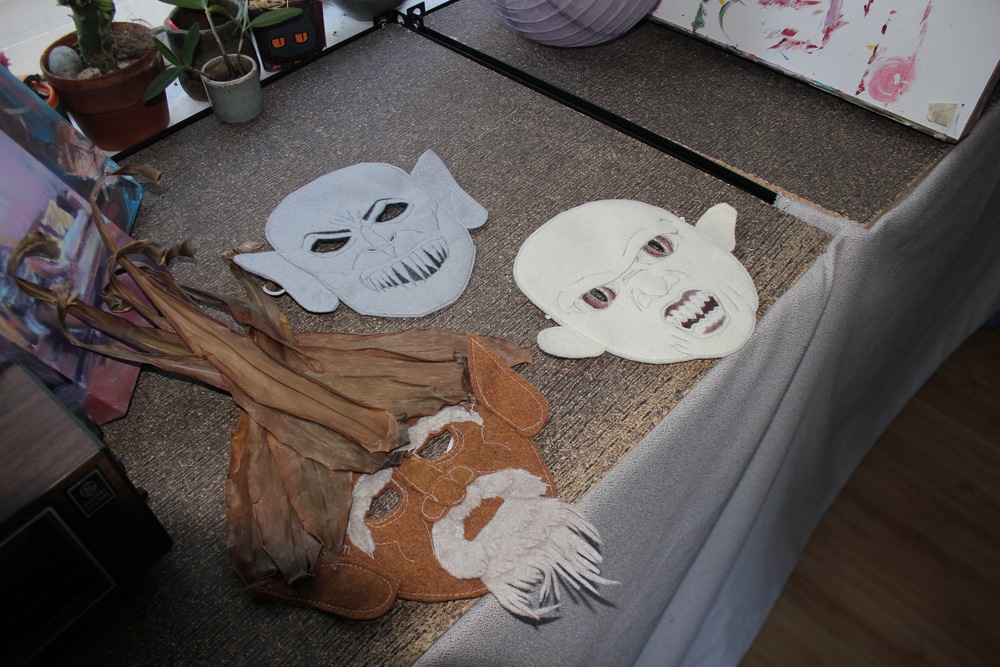
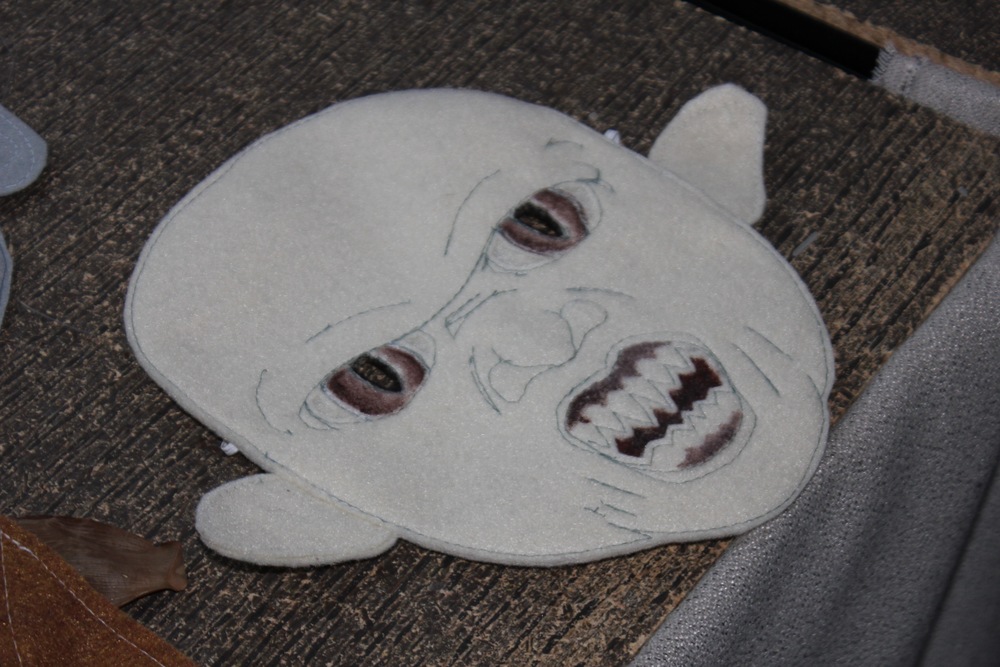
Marcos shows me a small mixed-media piece made from fabric cutouts. The shapes are arranged into the face of an elderly man wearing a cone-shaped hat composed of dried leaves. She tells me it’s a duende or gnome, a benign figure in Filipino folklore that serves as a housekeeper. Beside this figure she lays down a snarling, fang-toothed face. Pointing to the menacing creature, Marcos tells me it’s a child-eater who lures its victims into the jungle – and to their eventual death – by mimicking the sounds of a crying child. The numerous fantastical stories and creatures that explain the atrocities and traumas of life fascinate Marcos. When I ask her to share her favorite folktale Marcos excitedly references a print she made of the mananangaal, a supernatural creature that causes miscarriages.

Image provided by artist, Manananggal, Wood Block Relief Print, Stencil & Graphite, 2013
The manananggal cleverly takes the guise of a woman by day. But at night, the woman’s torso snaps off and sprouts wings. After taking on its true form as a hideous, winged monster, the manananggal flies to the hut of its pregnant victim. Once there it unfurls its elongated tounge, dropping it down the chimney. Using its tongue to penetrate its victim, the manananggal quietly removes the fetus while the mother sleeps.
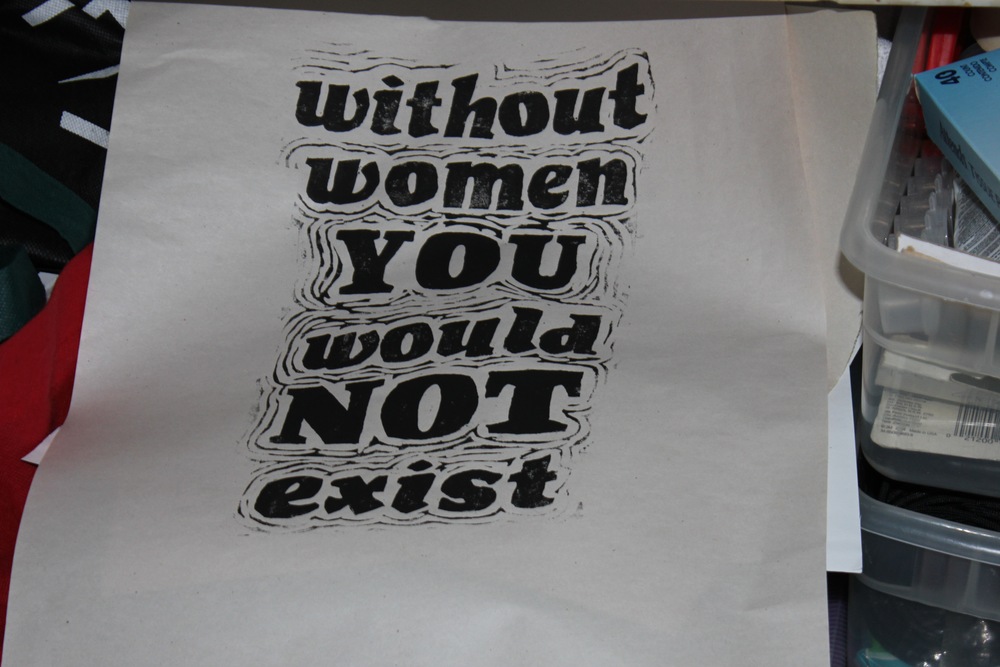

In between weaving, Marcos is also delving into new territory within her prints. Her most recent pieces incorporate text and experiments with typeface. These text-based prints recently debuted at San Francisco’s Bar Basic as part of the group exhibition, “Ink Shenanigans.” Provocative messages like “I control my reproductive rights,” and “Without women you would not be here,” boldly confront viewers. Marcos plans to continue to use printmaking as a medium to voice her thoughts.
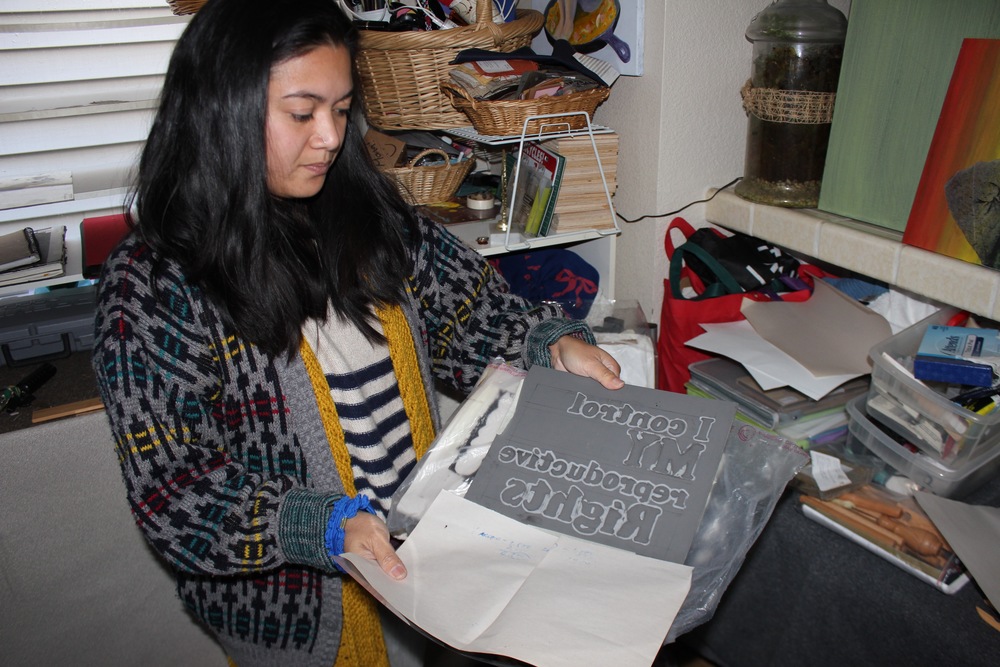
For Marcos community is extremely important and one of the reasons she found the courage to switch from a degree in business hospitality management to fine arts. Marcos didn’t discover her affinity for art until she was in college. Keeping her own late start in mind, Marcos wants to provide kids with the opportunity to explore creative outlets. In an effort to make the arts accessible, Marcos frequently volunteers as a teaching-artist throughout the Bay Area. She recently participated at this past October’s Filipino Heritage Month where she taught textile and weaving techniques using cardboard and paper—supplies that would be readily available to children in all communities.
Marcos also remains active in the arts community by searching for opportunities to lend other artists a hand with their projects. In doing so, she provides fellow creators with free assistance and dabbles in new mediums. Marcos explains that these collaborations are a wonderful source of inspiration for her, and allow her to continue fostering the sense of community she desires.

Image provided by artist
The pieces Marcos is currently showing at The Midway were created during her senior year of college. Revisiting the materials used in these works, Marcos reveals her desire to encourage viewers to want to touch her pieces.
“I want people to want to look so closely that they touch them,” Marcos tells me when discussing the surreal leaf-like pods she titled Repetition.
Mona Marcos’ works will be displayed as part of The Midway’s first intern-curated show, Contexture, until Monday, December 14, 2015.
Written by: Vanessa Wilson
Photos taken by: Jacob Abern

